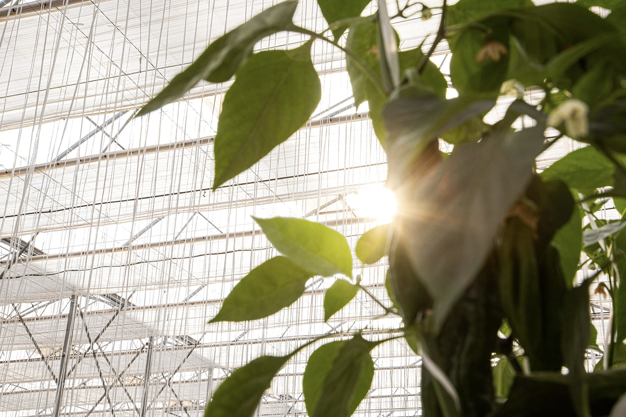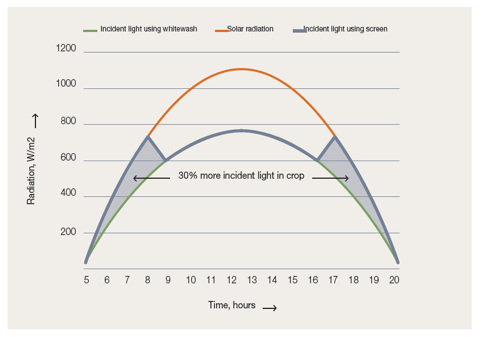There's a magic that happens when a crop gets just the right balance of inputs. And that right amount varies by season, but also by the time of day. That was one of the messages that shone out from a recent effort to gather together expert insight and Svensson trial data for publication in a new guide for growers in warm regions such as Mexico, Latin America, and southern Spain.

Paco Usero, a Svensson Climate Consultant based in Almería in, Spain, says that the insight that plants need different conditions at different times was a key reason for Svensson designing the climate screens it produces and the strategies it shares with customers.
"Every plant has an optimum light intensity range," he explains. "Above or below that level, we are losing production, overheating the plant cells, or losing efficiency in photosynthesis."
But hit that sweet spot, and the results can be striking, he says. Svensson has brought together its own expert's ideas, its customer's insights, and key trial data in the newly published guide The magic of getting the light balance just right.
"An important trial was conducted in Mexico where we compared a greenhouse with whitewash with the same crop in a similar greenhouse with screens that could be opened early and late in the day," he remembers.
In the trials conducted in 19-year-old plastic greenhouses, a focus on light balance with the addition of Svensson insect netting over the vents led to a 20% increase in yield and six additional harvesting weeks (for full references and details, see link below).
 Figure 1 The orange dome-shaped line on the chart is the total sunlight, and the green dome-shaped line is the light inside a whitewashed greenhouse. The grey line shows the light in the house with movable screens. Since the screen opens fully at dawn, more light is made available to warm the crop and promote growth. Then from 0800 to 1700, the screens are closed to provide optimal diffuse light to the crop and shade for the peak hours. Over a growing season, some 30% more light is available to the crop, with resulting beneficial effects on production and quality.
Figure 1 The orange dome-shaped line on the chart is the total sunlight, and the green dome-shaped line is the light inside a whitewashed greenhouse. The grey line shows the light in the house with movable screens. Since the screen opens fully at dawn, more light is made available to warm the crop and promote growth. Then from 0800 to 1700, the screens are closed to provide optimal diffuse light to the crop and shade for the peak hours. Over a growing season, some 30% more light is available to the crop, with resulting beneficial effects on production and quality.
Remove shade screen
According to Usero, a key element of the trial was to remove shade screens to give the crop an energetic start to the day and then introduce more shade as light levels peaked around midday.
"In the early morning, and late afternoon, this gives growers using a climate screen an advantage," he says. "They can get the most out of the morning and afternoon light by retracting the screens fully."
In addition, at midday, the screen blocks the most intense radiation and scatters soft light evenly throughout the greenhouse, he says.
"This creates a gentler and more high-grade, horizontal diffusion for faster growth and healthier plants. This control and flexibility can't be obtained by using whitewash."
FACT BOX:

Svensson's guide, The magic of getting the light balance just right, is available to download for free in a range of languages here.
For more information:
Ludvig Svensson
[email protected]
www.ludvigsvensson.com
